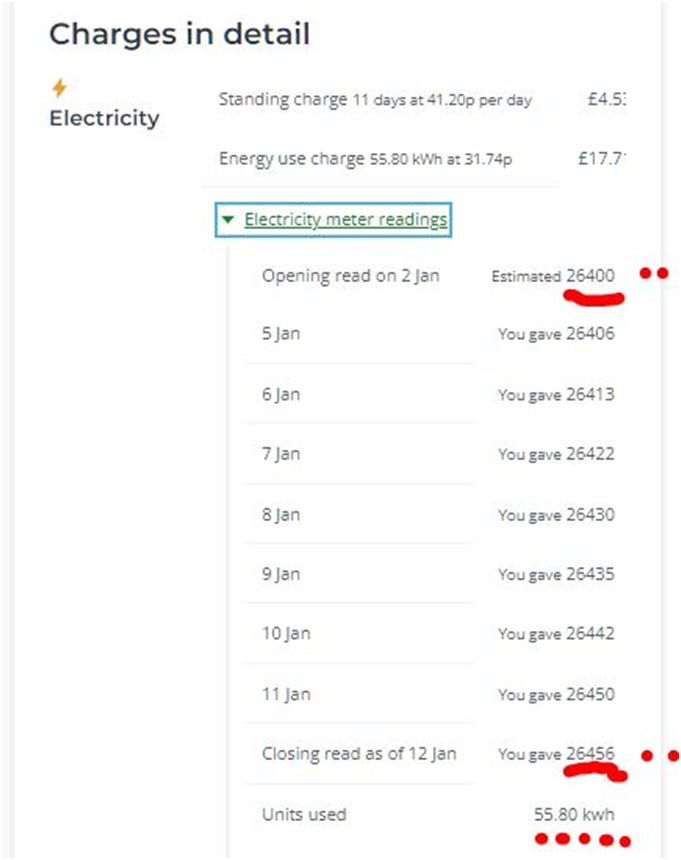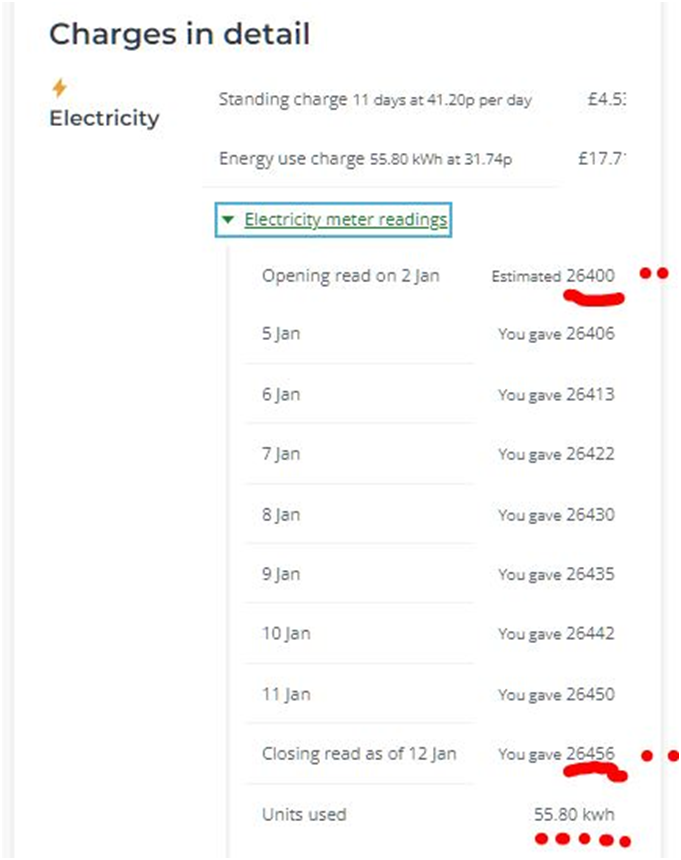A simple query…..after entering electricity readings of 26400 then 26456, a total of 56 units used, which equals 56kWh, why does my OVO online usage show 55.80kWh. As it is simple subtraction why is it showing to two decimal places? as readings are in whole numbers not fractions.
Why am I being billed to readings with a decimal place?
Best answer by Firedog
Updated on 31/10/23 by Abby_OVO
… they wouldn't round up or down whole numbers and end up with a tail of numbers after a decimal point.
If you’re still referring to the odd 80p, that comes from the very first figure in your screenshot. The Opening read was estimated (on what basis is not clear), not entered manually. But it will probably have been estimated to the norm for meter readings - the nearest 50wH. The page you copied from only shows whole numbers, so that estimate will have been 26,400.20, displayed as 26400. What do you see on the meter readings page?
The last reading - 26456 - could in fact have been 26,456.95 on the meter, but decimals are discarded however close the figure is to the next whole kWh. It all comes out in the wash: the 6p you apparently pay too little this month will be recuperated next month. If you continue to submit readings manually, you won’t see this sort of ‘rounding error’ again.
Reply
Log in to the OVO Forum
No account yet? Create an account
Enter your E-mail address. We'll send you an e-mail with instructions to reset your password.









